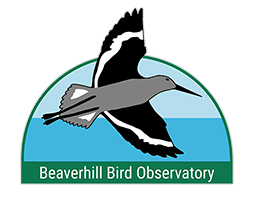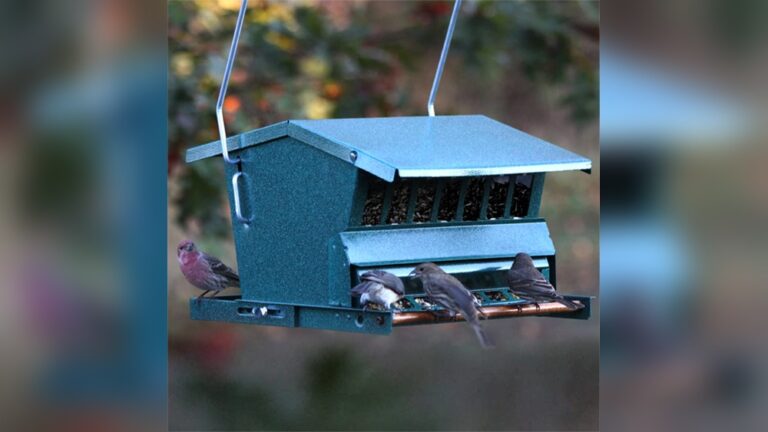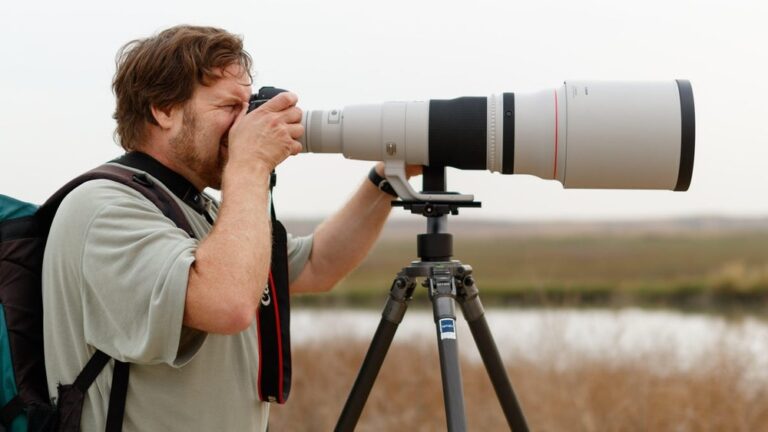Beaverhill Bird Observatory Reviews
If you love birds and nature, Beaverhill Bird Observatory might be your next favorite spot. But is it really worth the visit?
You’re probably wondering what to expect and if it lives up to the hype. This article will give you honest Beaverhill Bird Observatory reviews, helping you decide if it’s the right place for your next adventure. Keep reading to discover what makes this observatory special and what you need to know before you go.

Credit: ecf.ca
Location And Setting
The Beaverhill Bird Observatory sits in a unique natural spot. It offers a peaceful place for bird watchers and nature lovers. The setting helps make bird watching exciting and rewarding. Visitors can enjoy the quiet and beauty of the area while spotting many bird species.
The location provides easy access to different habitats. Each habitat attracts different kinds of birds. This variety makes the observatory a popular destination for people who love birds. The natural surroundings support a rich bird population throughout the year.
Geographical Features
The observatory is near Beaverhill Lake in Alberta, Canada. The lake is shallow and attracts many water birds. Wetlands surround the area. These wetlands are home to ducks, geese, and shorebirds. The mix of water and land creates a perfect bird habitat. Rolling fields and small forests also add to the diversity. These features support many bird species during migration and breeding seasons.
Best Time To Visit
Spring and fall are the best times to visit. These seasons bring many migrating birds to the area. The lake and wetlands fill with water birds during these times. Many species stop here to rest and feed. Summer offers chances to see nesting birds and young chicks. Winter is quiet but still holds some hardy bird species. Visiting during migration offers the richest bird watching experience.

Credit: prairiebirder.wordpress.com
Bird Species Observed
Beaverhill Bird Observatory is a treasure for bird watchers. It hosts many bird species throughout the year. Visitors often spot various birds in different seasons. The diversity here makes every visit unique and exciting.
Birdwatchers can see both common and rare birds. The observatory is a key spot for observing migration patterns. Each trip offers new chances to see different species up close.
Common Sightings
The observatory often shows birds like the American Robin and Red-winged Blackbird. These birds are easy to spot in summer and spring. Songbirds such as the Yellow Warbler appear regularly. Waterfowl, including Mallards and Canada Geese, swim in nearby ponds. Many visitors enjoy watching these familiar birds in their natural habitat.
Rare And Migratory Birds
Rare birds thrill many visitors at Beaverhill. Migratory species pass through during spring and fall. Birders sometimes spot the elusive Northern Hawk Owl. Other rare sightings include the Sandhill Crane and the Black Tern. These birds attract photographers and nature lovers. The observatory’s location makes it perfect for watching migration closely.
Facilities And Amenities
The facilities and amenities at Beaverhill Bird Observatory create a welcoming spot for nature lovers. Visitors find well-maintained areas that support a comfortable and enjoyable stay. The observatory offers essential services and spaces to enhance your bird-watching experience.
Visitor Center
The Visitor Center is the heart of the observatory. It provides maps, guides, and information about local birds. Staff members are friendly and ready to answer questions. The center also has binoculars and spotting scopes for use. It is a great place to start your visit.
Accommodation Options
Beaverhill offers simple yet cozy accommodation choices. Cabins and camping sites are available near the bird habitats. These options allow visitors to stay close to nature. Clean restrooms and shower facilities make the stay easier. Booking in advance is recommended during busy seasons.
Accessibility
The observatory works hard to be accessible to all visitors. Paths and trails are clear and easy to follow. Some areas have ramps and smooth surfaces for wheelchairs. Parking spots are close to main facilities. The staff is ready to help visitors with special needs.
Guided Tours And Programs
Beaverhill Bird Observatory offers guided tours and programs that bring visitors close to nature. These experiences help people learn about birds and their habitats. Every tour is designed to be educational and fun for all ages.
The observatory’s programs focus on hands-on learning. Visitors get a chance to see birds up close and understand their behavior. The guides are knowledgeable and make the tours interesting and easy to follow.
Bird Banding Demonstrations
Bird banding demonstrations show how scientists track bird movements. Visitors watch experts safely catch and release birds. They explain the process step by step. This helps people see how banding helps protect birds.
During the demonstration, visitors learn about different bird species. They also find out why tracking bird migration is important. The experience is calm and respectful to the birds. It creates a strong connection between visitors and nature.
Educational Workshops
Educational workshops cover many topics about birds and wildlife. They include talks, activities, and hands-on learning. These workshops are great for families, students, and bird lovers.
The workshops teach how to identify birds by sight and sound. They also explain bird habitats and conservation efforts. The sessions use simple language and clear examples. This makes learning easy and enjoyable for everyone.
Visitor Experience
Visitors to Beaverhill Bird Observatory often share wonderful stories about their time there. The experience is calm and filled with nature’s beauty. It offers a chance to see many bird species up close. The observatory provides well-marked trails and helpful guides. Each visit feels unique and peaceful.
Wildlife Viewing Opportunities
Beaverhill Bird Observatory is famous for its diverse bird population. Visitors can spot warblers, sparrows, and even rare hawks. Early mornings and late afternoons are best for sightings. Quiet walking helps avoid scaring the birds away. The observatory’s lookout points offer great views of the wetlands and forests.
Photography Tips
Photographers enjoy capturing the vivid colors of the birds. Use a zoom lens to get close without disturbing wildlife. Soft natural light improves photo quality, especially during sunrise. Be patient and still; wildlife does not like sudden moves. Take multiple shots to increase chances of a perfect photo.
Family-friendly Activities
The observatory welcomes families with children of all ages. Kids enjoy spotting birds and learning about their habits. Nature walks provide fun and education at the same time. The staff often organizes simple workshops and bird banding demonstrations. Families leave with good memories and new knowledge about birds.
Conservation Efforts
The Beaverhill Bird Observatory plays a key role in protecting bird species. Its conservation efforts help keep bird populations healthy. The observatory studies birds and their habitats. This helps scientists understand changes in the environment.
Visitors often praise the observatory’s clear focus on saving birds. The work done here supports global efforts to protect wildlife. Each year, new projects start to improve bird safety and habitat quality.
Research Initiatives
The observatory runs many research projects on birds and migration. Staff and volunteers track bird numbers and health. They collect data on bird species seen at Beaverhill Lake. This data helps spot trends in bird populations.
Scientists study how climate and land changes affect birds. They share findings with conservation groups worldwide. These projects guide actions to protect birds better. Research also helps create safe spaces for birds to breed and rest.
Community Involvement
Local people join the observatory to help with conservation work. Volunteers help watch birds and keep habitats clean. The observatory offers training on how to care for birds and nature.
Schools visit to learn about birds and why they matter. The observatory hosts events to teach about wildlife protection. This builds support for conservation in the community. Many visitors say the hands-on experience deepens their respect for nature.
Tips For Planning Your Visit
Planning your visit to Beaverhill Bird Observatory helps you enjoy your trip more. Knowing what to bring and the best times for bird watching makes your experience better. Prepare well to see more birds and stay comfortable.
Use these tips to have a smooth and fun visit.
What To Bring
Bring binoculars to see birds clearly. A camera helps capture special moments. Dress in layers to stay warm or cool. Wear comfortable shoes for walking on trails. Carry water and snacks to stay energized. A notebook is good for writing bird notes. Don’t forget sunscreen and insect repellent.
Best Times For Bird Watching
Early mornings are the best for bird activity. Many birds feed and sing at dawn. Late spring to early fall offers the most variety. Migration seasons bring unique and rare birds. Visit during weekdays for fewer crowds. Check the weather for clear, calm days. A quiet walk increases your chances to see birds.

Credit: www.beaverhillbirds.com
How Smart Pets Lover Can Help You with Beaverhill Bird Observatory Reviews
Learning Through Experience at Beaverhill Bird Observatory
For those drawn to the natural charm of Beaverhill Bird Observatory, reviews often highlight the rich educational opportunities embedded in its serene setting. Beyond simply spotting a variety of bird species, visitors find that the observatory’s guided tours and programs provide hands-on learning that deepens appreciation for local wildlife and conservation efforts.
As pet parents and nature enthusiasts, embracing these experiences can enhance your connection not only with wild birds but also with the feathered friends at home. Understanding bird behavior and habitat needs, as shared during tours, can inspire more thoughtful care for pet birds or backyard visitors.
- Observe how different species interact in their natural habitat
- Learn about conservation initiatives protecting migratory routes
- Gain practical tips on creating bird-friendly environments
For additional insights or planning advice, reaching out to the observatory staff via their official contact channels can be invaluable. This approach aligns with Smart Pets Lover’s mission: helping pet parents feel informed and connected to all creatures, winged or otherwise, one story at a time.
Frequently Asked Questions
What Is Beaverhill Bird Observatory Known For?
Beaverhill Bird Observatory is famous for bird banding and monitoring migratory birds. It provides valuable data for bird conservation and research. Visitors can observe diverse bird species in their natural habitats.
When Is The Best Time To Visit Beaverhill Bird Observatory?
The best time to visit is during spring and fall migrations. These seasons offer the highest chance to see various migrating birds. The observatory often hosts events and guided tours during these periods.
What Facilities Are Available At Beaverhill Bird Observatory?
The observatory features bird banding stations, walking trails, and educational displays. There are also guided tours and volunteer programs for bird enthusiasts. Facilities support both casual visitors and researchers.
How Can I Participate In Bird Monitoring At Beaverhill?
Visitors can join volunteer programs or attend workshops to learn bird banding techniques. Participation helps collect crucial data on bird populations. Registration details are usually available on the observatory’s website.
Conclusion
Beaverhill Bird Observatory offers a great experience for bird lovers. The peaceful setting helps visitors enjoy nature fully. Many bird species can be seen up close here. Staff are friendly and share helpful information. It’s a perfect spot for learning and relaxing.
Visiting brings joy and a deeper love for birds. Plan a trip to enjoy the calm and beauty. You will leave with happy memories and new knowledge.







